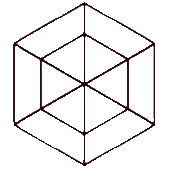2260 words
Parent: T.00_ED_TEXTUAL HOLOGRAM: PRESENTATION
SHOCK SPACE
Source: Elie During, “Shockwaves: About 3 Laughing and 4 Crying (1998)”, in Aernout Mik: Communitas, Edition Folkwang / Steidl, Essen, 2011.
Aernout Mik, 3 Laughing and 4 Crying (1998). Wearing shorts or anonymous shell suits, filmed from a high angle, the men and women sitting in various postures who make up this curious group portrait have nothing to exhibit apart from the expressions on their faces and the bulky but mute presence of their bodies as they shake with uncontrollable sobbing or rock with compulsive bursts of laughter. Half-bare disjecta membra—thighs, feet, forearms—cohabit with the socks and sports shoes abandoned on the beige carpet which, in this close-up view, flattens any possible depth and seems to rise up vertically like a wall. A draft blowing in from who knows where sweeps over faces and musses hair. We suspect there is a fan outside the frame.
We do not know if the scene precedes or follows effort, or what form of exercise is involved here. There are no visible signs of fatigue, no traces of sweat. Everything is neutral. Beyond their specific but nevertheless nondescript physical traits and the affective inclination indicated at first glance by their corporeal behaviour, there are no clues to help us individualise these figures – one hardly dares speak of persons. Joy, sorrow, anxiety: their conduct seems at once stereotyped and fundamentally undetermined as regards its object. On closer inspection, it sometimes turns out to be confused and even contradictory. To realise this, we need only concentrate on one figure for a few minutes in order to follow the changing nuances of their behaviour. It is as if, over time, the weepers and laughers subtly exchanged functions, without having to change their position. This is, of course, an illusion, for the truth is that the actors perform their roles with considerable perseverance; and yet the impression is almost irresistible. In the upper part of the screen, in the background, a short-haired woman sits slumped on the floor. Leaning on her elbow, she is literally laughing until she cries. For sure, after about ten minutes this state of nervous excitement, and the spasms racking her body, become painful. Every time she tries to catch her breath, she has the stunned look of a madwoman. Sometimes her expression mists over, her mouth grows stiff and twisted. Laughter becomes a grimace. Her red-bearded neighbour, whom we see in profile, also has a rather equivocal expression, as if he were caught in an unstable state between laughter and tears. After all, we do say “weep with joy,” don’t we? At the sides are two older men, one visibly numb with sadness, the other afflicted by a deep, inner anguish. Even in their case, the beginnings of a smile or expression of tenderness seem to be visible through the veil of tears. It is not easy to account for these apparent “atmospheric” variations in the affective tones attached to the different elements of this tableau. Might not these subtle phase transitions that we seem occasionally to detect be due to the contaminating effect of the behaviour of the other members of the group? Incidentally, we note that the two figures in the foreground, as well as the central figure, constitute fixed reference points. In total, there are always three people laughing and four crying. And in a way, this comes down to the same thing.
But let’s get back to the composition. This gathering needs to be grasped immediately, as it literally is, as a physical arrangement: the arrangement of a multiple entity in the neutral, undifferentiated environment defined by the carpeted floor. The question that then arises, with some acuteness, concerns the paradoxical coexistence of these figures in a space that is noteworthy for being both dense and dispersive. It is a matter, in other words, of the coexistence of an ensemble conceived as a centrifugal group.
We can observe that this dispersive or centrifugal or dispersive character is heightened by the decision—a habitual one with this artist—to present the image without a sound-track. One would suppose that ambient noise, with its mixture of bursts of laughter, groans and moans, would immediately have the effect of suggesting a sensorial envelope, a kind of community of atmosphere. There is nothing like cutting off the sound and presenting the naked image if you want to maintain the void spreading between these figures.
As in Dispersion Room (2004), the minimalist choreography of Aernout Mik’s 3 Laughing and 4 Crying offers the spectacle of forms of behaviour that are at once simultaneous and uncoordinated, that seem to develop in space-times that are contiguous yet parallel, with no real contact or communication. Everyone here seems to be enclosed in their own little bubble, absorbed in private recollection of an unascertainable event (a happy one for some, an unhappy one for others); each person is surrendering to the movements of their soul, to the play of feelings and their inner reverberation, at the same time abandoning their body to the ebb and flow of emotions and giving way to the convulsions that mechanically sustain them. (Here we may recall that, according to William James, the physiological correlates of emotions are often their causes rather than their effects.)
There are no verbal exchanges, no gestures, no signs of attention to hint at a possible solidarity between these individuals in their suffering or joy. No effusions, no comforting. Even the gazes, escaping out of frame in diverging directions, seem not to be focusing on anything in particular: they are vague and somehow turned back inward, bearing witness to a windowless inner life. Not once do they meet. Whether manifested by laughter or tears, the affect is totally non-communicative. It creates no links, no contact. Each person is wholly self-involved, absorbed in his or her joy or sorrow, as if in a state of shock—like the one that overcomes people in a crowd when a bomb has gone off, or the victims of some motorway accident, waiting for help to come. Refraction (2006) offers a vision of this situation that is perfectly complementary. What we have here, however, is not catatonia but a kind of nervous excitement which threatens to continue until they are exhausted, as if the air was thick with a cocktail of laughing gas and tear gas.
Yet the scene offers virtually no narrative lead: there hardly seems to be anything happening. The duration chosen for this shot appears perfectly arbitrary, too: it could just as well last one hour or several, for its time is diluted and featureless and seemingly without disruption, except from the fatigue of the actors. This point needs to be emphasised: there is nothing paroxysmal or excessive about the stereotyped emotions presented to us here, apart from the fact that they are “sustained” over an unwontedly long period. The most disconcerting thing about all this, indeed, is the unvarying level of intensity with which they express themselves. There is no build-up, and therefore no expectation or tension is experienced by the spectator. Instead, there is a long stasis which ends up merging with the barely detectable variations in the postures of the bodies and the expressions of the faces—these transformations being as slight as the ones wrought in the leaves of a tree by the wind, or the air churned by a fan as it gently ruffles the folds of clothing.
Not only is the rather nervy activity of all these people indeterminate in its purpose, it is also cut off from its causes. Like in the films of Robert Bresson, all we have before us are effects, after-the-event occurrences or repercussions. But here the “blind field” evoked by Pascal Bonitzer in Le Champ aveugle is the condition for an experiment in the spatio-temporal distribution of affects. Something has taken place, no doubt: a traumatic or joyous event (perhaps both at the same time), an event that in itself is unfigurable, the presence of which is marked solely by the way it empties out the space by disjoining these bodies. The figures—and this was the term Bresson used for his actors—placed in a relation of vicinity without exchange, shy away from each other in the very place where they are assembled, like centres of emotional concentration whose radiance, instead of spreading to others, flows back over them or dissipates on the surface.
This strange phenomenon of a multiplicity which does not “gel,” and which – like Sartre’s group-in-fusion – undergoes a continuous process of detotalisation, to the extent that it is incapable of forming a collective entity, becomes clearest when, instead of focusing on this or that event or pseudo-group, instead of identifying and therefore counting the emotions (3 + 4), we allow our gaze to float, to drift over the surface, and pick up only a kind of vague murmur. This overall view frees the movements of their expressive signification. It is like Brownian motion going through bodies, carrying away subjects, reducing individualities to a cloud of singularities, micro-movements or intensive traits (facial tics, grimaces, sobs, spasms, the nodding of heads, frowning, swaying busts, hands rubbing faces, rubbing forearms or thighs, etc.). These wandering singularities must surely come together somewhere, on the edges, on the imperceptible fringes of the individuated bodies; there, they forge links that are hazy but too tenuous and too dispersed to gain collective consistence.
Coexistence without community. Simultaneity without event. Effects without causes. Reverberation without diffusion. These compositional choices, and the unstable – or rather metastable – equilibrium that they institute, produce a sensory surface. This is a very singular plane of affects: affects that do not circulate, or rather, that circulate only along oblique paths, by imperceptible displacement or dephasing. All that remains are effects of precipitation and deceleration which offset or neutralise each other. A slow unproductive percolation. No community, no emerging form of the collective. But nor are there any personal affects capable of developing and individuating over time. Nothing is happening and yet, in this multiplicity, something does come to pass – if not passing from one body to another, then at least between them all. Something that is no longer in the order of subjectivity, but in the realm of pure, objectified emotion, projected into space. The shock waves, absorbed or refracted at certain points, are resolved in movements on the spot, and ultimately as pure quality. Bit by bit, they form an expressive surface, beyond perception and action. This was precisely Bergson’s idea of affect, which he summed up in this simple formulation: “a kind of motor tendency in a sensory nerve” (as Gilles Deleuze points out in The Movement-Image).
However, the particular treatment that Aernout Mik confers on his figures means that the group portrait is doomed never to come together on a unified expressive plane that would have the power of a face, with its own spatio-temporal coordinates (see The Movement-Image, chapter 6: “The affection image: Face and close-up”). The principle of spacing which governs the distribution of bodies maintains an unresolved state of tension between a multiplicity of discordant space-times, while, through countless little expressive movements, it makes us feel something that is like an affective ether, quite outside human proportions. Instead of a space for the virtual conjunction of affects, we are confronted with a dispersive milieu which overflows any assignable emotion, and therefore any face. Deleuze offers rich resources for designating this kind of ensemble that is amorphous yet loaded with affects: “space of fragmentation,” “any space-whatever,” “disconnected space,” “holey space,” etc. (See The Movement-Image, chap. 7, “The affection image: Qualities, powers, any-space whatevers”). Aernout Mik’s “shock space” can be added to the list.
The close-up that viewers may be tempted to make for themselves by framing and isolating one of the figures in the group will reveal a kind of nervous convulsion that is prolonged as the minutes drag on until affective values seem to have been inverted. Such a spectacle, verging on hysteria, is as harrowing as it is grotesque. As for the distance shot which is really the heart of this piece, what it yields up—assuming, of course, that we allow ourselves to become absorbed—is an essentially ambiguous phenomenon: a juxtaposition or a superposition of contradictory elements which irremediably shatters all unity of feeling and keeps the ether in a state of agitation that prevents it from condensing and defining a global affective tone. So what is left? A kind of monstrous body, or rather, a non-totalisable multiplicity of wandering, inorganic affects.
“Emotions are planes, planes of intensity. What modern cinema is reproached for is essentially inventing perverse planes that break up mass emotion.” (Pascal Bonitzer, Le Champ aveugle, p. 142) This observation came with a desideratum which today can be applied to both “installed” video and cinema: in either case, the point is to unpeel “common emotions” in order to attain “new, less identifiable, less identifying sensations.” (Le Champ aveugle, p. 143). 3 Laughing and 4 Crying effectively precludes any process of identification. Aernout Mik has invented a new machine for breaking up mass emotion. It is a kind of shredder which, by immediately neutralising the solid support constituted by the pathos and expression of individual presence, at the same time prevents the collective from finding a form.
Links
︎ egs.edu/biography/elie-during ︎ parisnanterre.fr/m-elie-during--697698.kjsp
From the same writer
T.00_ED_TEXTUAL HOLOGRAM: PRESENTATION T.01_ED_FOLDS AND PIXELS T.02_ED_DIGITAL SUBLIME T.03_ED_MATHEMATICAL SUBLIME T.04_ED_IMMANENT SUBLIME T.05_ED_NEXUS T.06_ED_KINKED CLASSICISM T.07_ED_LOOSE COEXISTENCE T.08_ED_FLOATING TIME T.09_ED_FLOATING SPACE T.10_ED_RETRO-FUTURES T.11_ED_EXITING VIRTUAL REALITY T.12_ED_BULLET TIME T.13_ED_GHOST TIME T.14_ED_SUBLIMINAL TIME T.15_ED_DIAGRAMS OF COEXISTENCE T.16_ED_VOLUME-IMAGE T.17_ED_VERTICAL TIME T.18_ED_TURNING MOVEMENTS T.19_ED_SUPERTIME T.20_ED_PROTOTYPE T.21_ED_ZERO-G ARCHITECTURE T.22_ED_SHOCK SPACE T.23_ED_TRANSPARENCY






